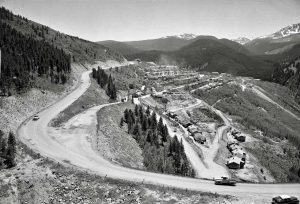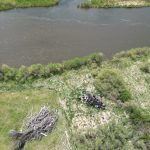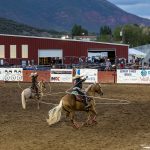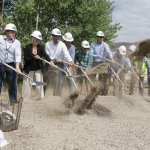How your money’s spent on open space
Vail, CO Colorado

ALL |
EAGLE COUNTY ” Open space acquisition has never been an easy sell here.
In 1994, voters rejected an open space tax for the county by a 58 percent to 42 percent margin.
Eight years later, in 2002, open space supporters tried that ballot issue again, and won narrowly, though the controversy continued.
The tax money started rolling in 2004. That same year, $2 million was spent to preserve the Bair Ranch ” a 2,794 acre sheep ranch on the county’s western border.
Some observers praised that decision as a way to protect the county’s agricultural heritage and preserve valuable wildlife habitat. Critics protested that not all the property was in Eagle County; and preserving it did not allow public access to the land.

Support Local Journalism
In 2005, the open space battle brewed again when the county spent tax money toward the purchase of the 72-acre Eaton Ranch parcel in the heart of Edwards.
Supporters said the land could be developed into a public park that would be treasured by local residents. Critics questioned the high price tag on what was a developed gravel pit property.
There’s been a couple of other smaller, less controversial decisions since that time. The county spent $65,000 on the three-acre Meadow Creek property in West Vail, which allowed the expansion of a popular public park. This year, the county has committed $1 million toward preserving on a couple of ranch properties in the Roaring Fork Valley.
All of the open space spending has involved the county partnering with both the public and private sector. But whether the program has been effect, well, that depends on who you ask.
Lisa de Graaf, the county’s new open space planner, said Eagle County’s open space program has come a long way in a short time.
“I think maybe because the program is so new, its mission has not completely come true … as it moves along, people are going to be really happy with acquisitions that we make for open space,” says de Graaf.
She says the open spaces that have been preserved have value even when that preservation does not include public access.
“Everybody kind of wins, because no McMansions will be built there, and our ranching heritage will be preserved,” she says.
The Eaton Ranch property ” also called the Eagle River Preserve” is being developed by the county into a park with a trail system and access to the Eagle River.
Tom Edwards of Gypsum was not a supporter of the open space tax in 2004. He voted against it, because he felt open space could be more fairly funded through a sales tax.
Edwards argued that a sales tax mechanism provided a way for county visitors to help pay the bill. However, since the taxed passed, he has gotten on board, serving on the county’s Open Space Citizen Advisory Committee, which makes recommendations on open space funding.
“My philosophy about this stuff is ‘OK, I wasn’t for it ” but it’s here now so let’s work with it,'” says Edwards.
He’s also president of the board of directors of the Eagle Valley Land Trust, a nonprofit organization that raises money for land conservation in the valley, and has partnered with the county on several of the open space projects.
He’s satisfied with how the open space tax has been spent to date. “I don’t think any of it is bad,” says Edwards, “I’m sure that if the Eagle River Preserve were open now, and people were fishing and playing on it, they would be a lot happier with the money spent there.”
The Bair Ranch deal included 512 acres along the Colorado River that went to the Bureau of Land Management for public use, Edwards said.
“Just protecting that land that is the opening to Glenwood Canyon is worthwhile. The county is only into it for $2 million. I think that is a bargain,” Edwards said.
Purchase of open space begins with the Citizen Advisory Committee that makes recommendations based a particular parcel’s potential for recreation, scenic qualities, heritage value, wildlife, and access to stream and rivers, among other criteria.
Edwards residents Dave and Ellen Mitchell were on opposite sides of the 2002 open space tax vote. She supported it. He believes open space should be purchased with private donations, rather than public money.
Both say they are not pleased with how the money has been spent to date.
“I personally am very disappointed in our choices in open space,” said Ellen Mitchell, citing in particular the Eaton parcel and Bair Ranch.
She says the Edwards gravel pit is in the core of Edwards with good pedestrian and transportation access. Development of that parcel would be logical, she said.
Bair Ranch, while beautiful, is for the most part not visible to the majority of the population, she said.
She suggests that a better use of open space money would be to purchase land on Lake Creek or perhaps to preserve what was the Berry Creek Equestrian Center. Her husband has similar thoughts.
“I think the Bair Ranch was misspent money,” Dave Mitchell said. He points out that 83 percent of the county is federal land. “I don’t think this (open space preservation) should be a hot issue,” he says.
David Mitchell has a little softer take on the gravel pit parcel at Edwards. Although he says the property could be better used for commercial space, he says people could also argue that it could be the equivalent of New York’s Central Park some day ” an oasis of green space in the midst of development.
Simonton acknowledges the 83 percent public land figure, but says there’s still a need for open space preservation. “Some of the most critical wildlife habitat, view corridors, and ecosystems are on the privately owned valley floor,” he says.
Cindy Cohagen, director of the Eagle Valley Land Trust, says preservation of open space is a critical issue because of how fast the county is growing.
“I believe we have about five years to really make a difference in shaping the future of this valley,” says Cohagen.










